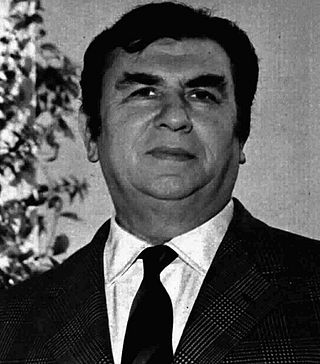
Luigi Cervi, better known as Gino Cervi, was an Italian actor. He was best known for portraying Peppone in a series of comedies based on the character Don Camillo (1952–1965), and police detective Jules Maigret on the television series Le inchieste del commissario Maigret (1964–1972).

Luisa Ferida, real surname Manfrini, was an Italian stage and film actress. She was one of divas in Italian cinema during decade 1935–1945 and she was the highest paid movie star of that period. The actress was famous as a films diva and she is remembered for her tragic death; in fact during the period of anti-fascist vendettas, immediately after Italian Civil War, she was assassinated, as was later proved by the Milan Court of Appeal, by shooting following a summary trial carried out by some partisans: she was shot with her lover, the actor and member of Decima Flottiglia MAS Osvaldo Valenti, as accused of alleged and hypothetical participation in war crimes and torture in connection with so-called Koch gang, facts of which she was then deemed innocent after the war. Therefore a war pension was allocated to the mother, who had no other source of income.
Umberto Sclanizza (1893–1951) was an Italian theatre and cinema actor from Friuli-Venezia Giulia. His film work straddles a period in Italian cinema, 1936–1943, when the industry was largely devoted to the production of mildly propagandistic works, such as Il Re d'Inghilterra non paga (1941). This type of old-fashioned classical drama, often infused with thinly-veiled Axis sympathies, was to indirectly pave the way for the Italian Neorealism movement, which rejected the melodrama style and consigned it to the industry's past.

Paolo Stoppa was an Italian actor.
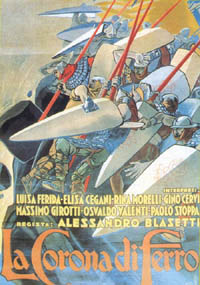
The Iron Crown is a 1941 Italian adventure film written and directed by Alessandro Blasetti, starring Massimo Girotti and Gino Cervi. The narrative revolves a sacred iron crown and a king who is prophesied to lose his kingdom to his nephew. It blends motifs from several European myths, legends and modern works of popular fiction. The film won a Coppa Mussolini award, which is the ancestor to the Golden Lion.
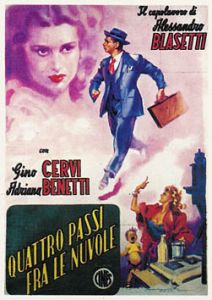
Four Steps in the Clouds is a 1942 Italian comedy-drama film directed and co-written by Alessandro Blasetti, starring Gino Cervi and Adriana Benetti. It tells the story of a married man who agrees to act as the husband of a young pregnant woman who has been abandoned by her boyfriend. Aesthetically, it is close to Italian neorealism. It was shot at Cinecittà Studios in Rome. The film's sets were designed by Virgilio Marchi.
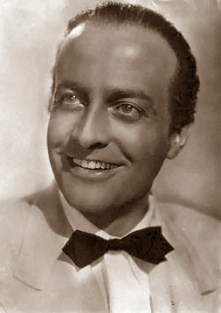
Osvaldo Valenti was an Italian film actor. Valenti starred in several successful Italian movies of the late 1930s and early 1940s, such as the famous The Iron Crown and The Jester's Supper. He appeared in more than 50 films between 1928 and 1945. He and his lover, Luisa Ferida, were executed by partisans in Milan, Italy, due to their links with Fascism. Their story was portrayed in the 2008 film Wild Blood.

Rina Morelli was an Italian film and stage actress. She appeared in 34 films between 1939 and 1976. Her husband, Paolo Stoppa, was an Italian stage and film actor, as well as a renowned Italian language dubber for American film stars.
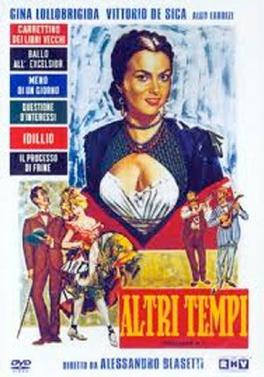
In Olden Days is a 1952 Italian comedy drama anthology film directed by Alessandro Blasetti and featuring an ensemble cast that included Gina Lollobrigida, Amedeo Nazzari, Vittorio De Sica, Elisa Cegani, Barbara Florian, Aldo Fabrizi, Andrea Checchi and Alba Arnova. It was shot at the Cinecittà Studios in Rome. The film's sets were designed by the art directors Dario Cecchi and Veniero Colasanti. It is also known as Times Gone By and Infidelity.

The Shortest Day is a 1963 Italian comedy film. It is a parody of the war movie The Longest Day and stars the popular duo Franco and Ciccio in the leading roles. Dozens of other well-known actors, from both European and American cinema, agreed to appear in the movie in cameo roles for free to avert the bankruptcy of the production company, Titanus.

Ettore Fieramosca is a 1938 Italian historical film directed by Alessandro Blasetti and starring Gino Cervi, Mario Ferrari and Elisa Cegani. It is adapted from the 1833 novel of the same title by Massimo D'Azeglio, based on the life of the 16th century condottiero Ettore Fieramosca.

The Black Eagle is a 1946 Italian historical adventure drama film directed by Riccardo Freda and starring Rossano Brazzi, Irasema Dilián and Gino Cervi. It was released as Return of the Black Eagle in the United States. The film is based on the unfinished 1832 Russian novel Dubrovsky by Alexander Pushkin (1799–1837). It was followed by a 1951 sequel Revenge of the Black Eagle, also directed by Freda.

Don Cesare di Bazan is a 1942 Italian historical adventure film directed by Riccardo Freda and starring Gino Cervi, Anneliese Uhlig and Paolo Stoppa. The film is set during the Catalan Revolt of the Seventeenth century. It is based on a play by Philippe Dumanoir and Adolphe d'Ennery. It marked the directoral debut of Freda who went on to be a leading commercial Italian filmmaker.
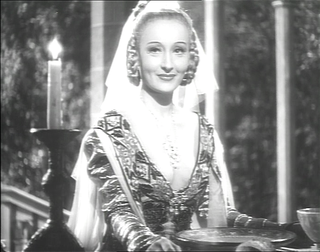
The Jester's Supper is a 1942 Italian historical film directed by Alessandro Blasetti and starring Amedeo Nazzari, Osvaldo Valenti and Clara Calamai. It was based on a play of the same title by Sem Benelli, which had later been turned into an opera by Umberto Giordano. Like the play, the film is set in the 15th century Florence of Lorenzo the Magnificent and portrays a rivalry that leads to a series of increasingly violent practical jokes.

The Innkeeper is a 1944 Italian historical comedy film directed by Luigi Chiarini and starring Luisa Ferida, Armando Falconi and Osvaldo Valenti. The film is an adaptation of Carlo Goldoni's 1753 play The Mistress of the Inn, one of a number of times the work has been turned into films. It belongs to the movies of the calligrafismo style.
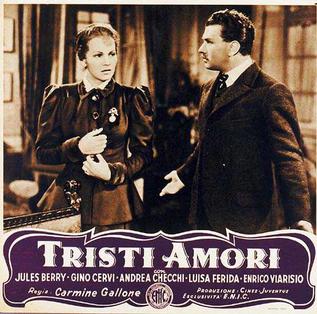
Sad Loves is a 1943 Italian historical drama film directed by Carmine Gallone and starring Jules Berry, Gino Cervi and Andrea Checchi. It was based on the play of the same title by Giuseppe Giacosa. It was made at Cinecittà in Rome. It is set in the 1880s.
The Joker King is a 1935 Italian historical comedy film directed by Enrico Guazzoni and starring Luisa Ferida, Armando Falconi and Luigi Cimara.
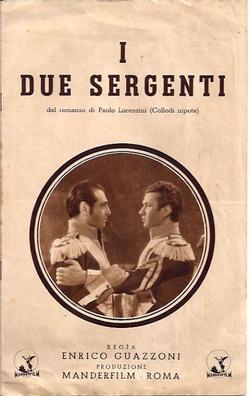
The Two Sergeants is a 1936 Italian historical drama film directed by Enrico Guazzoni and starring Evi Maltagliati, Gino Cervi and Mino Doro. It was based on the play The Two Sergeants by Theodore d'Aubigny, which has been made into films several times. It is set in the Napoleonic Wars. The film marked the debut of Alida Valli who had until recently been a student of the Centro sperimentale di cinematografia. Valli went on to be a leading star of Italian cinema.
What a Distinguished Family is a 1945 Italian "white-telephones" comedy film directed by Mario Bonnard and starring Gino Cervi, Assia Noris and Aroldo Tieri.

Fedora is a 1942 Italian historical drama film directed by Camillo Mastrocinque and starring Luisa Ferida, Amedeo Nazzari and Osvaldo Valenti. It is based on the 1882 play of the same title by Victorien Sardou.

















